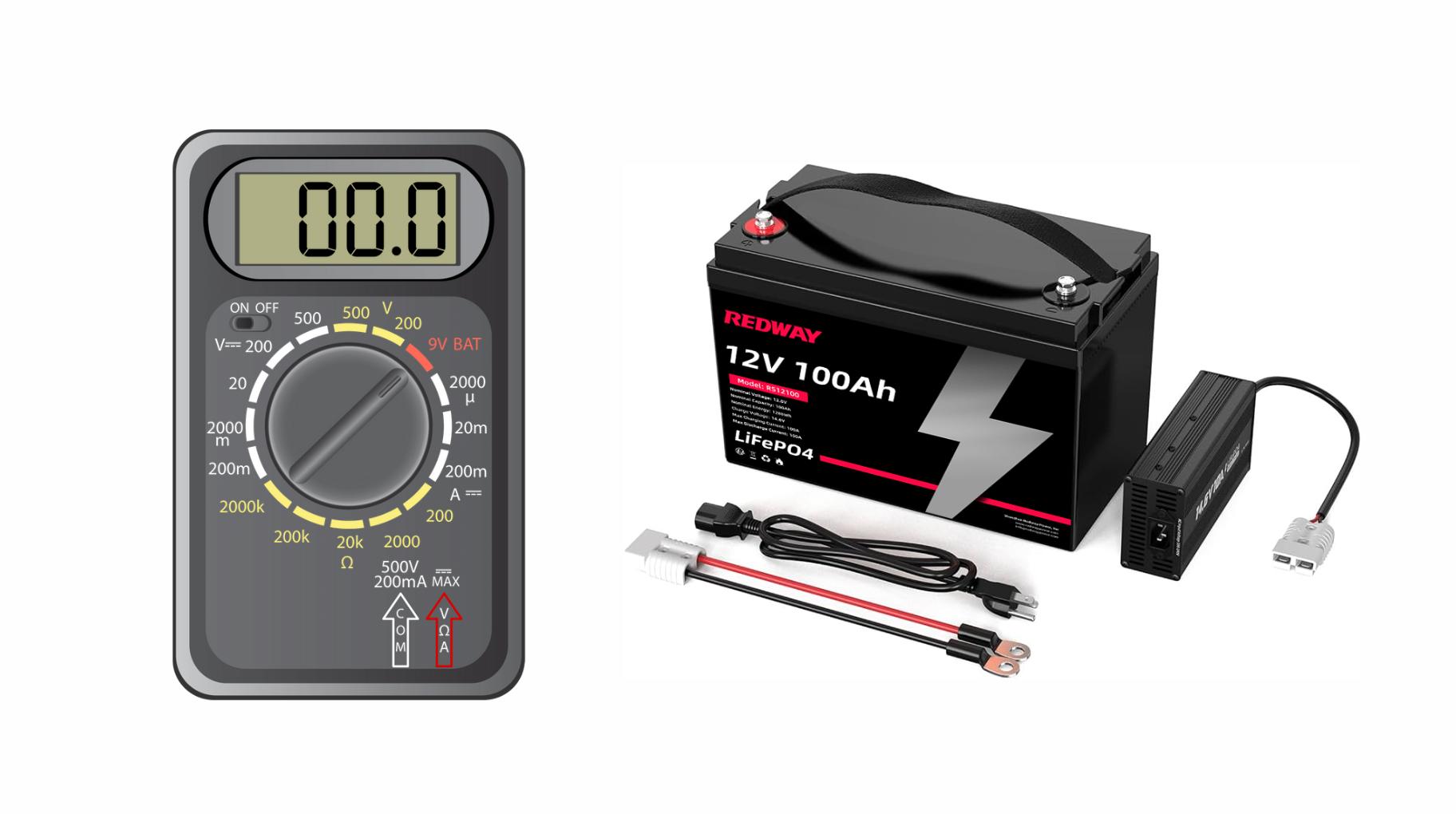
How to Check Battery Amps with a Multimeter: Understanding Cranking Amps and Amp Hours
You cannot directly measure a battery’s cranking amps or amp-hour capacity with a standard multimeter. Instead, use a voltage drop test during engine cranking to assess battery health and estimate its ability to deliver high current. Amp-hours indicate total energy storage, while cranking amps reflect the battery’s short-term current delivery for starting engines.
What is the difference between cranking amps and amp-hours?
Cranking amps (usually Cold Cranking Amps, CCA) measure a battery’s ability to provide a high burst of current to start an engine, especially in cold weather. Amp-hours (Ah) measure total energy storage capacity over time, showing how long a battery can deliver a steady current before needing recharge.
How can I use a multimeter to test battery voltage during cranking?
Set your multimeter to DC voltage above 15V for a 12V battery. Connect the red lead to the positive terminal and black to the negative terminal. Have a helper start the engine while monitoring voltage drop. A healthy battery voltage should not drop below about 9.6 to 10 volts during cranking.
Can a multimeter measure the actual cranking amps (CCA) of a battery?
No. Measuring actual CCA requires a specialized load tester. A multimeter measures voltage but cannot directly measure instantaneous high current (amps). Voltage drop test during cranking is an indirect method to assess battery health.
How do I measure amp-hours (Ah) with a multimeter?
Amp-hours require discharging the battery with a constant load while measuring current over time, placing the multimeter in series with the load and battery. Multiply the known current by the time until the battery reaches a cutoff voltage. This process is complex and requires suitable equipment and safety precautions.
Why can’t I directly measure amps by touching the multimeter leads across the battery?
Directly connecting the multimeter across the battery terminals in amp mode causes a short circuit and may damage the meter or battery. To measure current, the multimeter must be connected in series with the load so all current flows through the meter safely.
What safety precautions should I follow when measuring battery amps?
Ensure the multimeter is set correctly for DC current and the test leads are in the right ports. Do not exceed the current rating of the multimeter. Always connect the meter in series with the circuit and avoid creating short circuits. Use insulated gloves and eye protection.
How do voltage and current tests together indicate battery health?
Voltage tests show the battery’s resting charge level, while voltage drop under load (like cranking) reveals its ability to deliver high current. Current measurements and voltage under load combined provide information about internal resistance and overall battery condition.
When should I replace my battery based on voltage or current tests?
If battery voltage falls significantly below 12.4V at rest or drops below approximately 9.6-10V during cranking tests, it indicates reduced capacity and pick performance issues, suggesting replacement is needed for reliable operation.
How does Lithium-Battery-Manufacturer recommend testing and maintaining battery performance?
Lithium-Battery-Manufacturer advises using voltage and current tests for diagnostics combined with proper load testers for comprehensive assessment. Regular monitoring and maintaining battery charge with quality chargers extend battery life while ensuring safe and efficient energy delivery.
Can I measure amp-hours or cranking amps with any other tools besides a multimeter?
Yes. Specialized battery load testers or clamp meters can measure high currents and capacities more safely and accurately than standard multimeters, providing direct measurement of cranking amps and amp-hour performance.
Battery Testing Tools Comparison Chart
| Test Type | Tool Needed | Measurement Purpose | Ease of Use |
|---|---|---|---|
| Voltage Test | Multimeter | Battery charge level | Easy |
| Cranking Amps | Load Tester | Battery high current burst ability | Moderate |
| Amp-Hours | Load Tester & Timer | Total capacity measurement | Complex |
| Current (Amps) | Clamp Meter / Multimeter (series) | Instantaneous current | Moderate to Complex |
Lithium-Battery-Manufacturer Expert Views
“At Lithium-Battery-Manufacturer, powered by Redway Power, we emphasize precision in battery diagnostics to maximize reliability. While multimeters provide foundational voltage insights, accurately gauging cranking amps and amp-hour capacity demands specialized testing tools. Our approach integrates smart diagnostics with quality chargers and management systems, ensuring batteries deliver peak performance safely throughout their lifecycle.” – Expert from Lithium-Battery-Manufacturer
Conclusion
Checking battery amps with a multimeter mainly involves indirectly assessing battery performance through voltage and voltage drop tests, not direct amp measurement. Cranking amps and amp-hours are essential but require specialized equipment. Following best practices for measurements and regular monitoring preserves battery health and ensures reliable power delivery. Lithium-Battery-Manufacturer advocates accuracy and safety in all battery testing processes.
FAQs
Can I measure cranking amps directly with a multimeter?
No, a load tester is required to measure true cranking amps accurately.
How do I perform a voltage drop test with a multimeter?
Measure battery voltage while starting the engine; voltage should not fall below 9.6-10 volts.
What does amp-hour rating mean on a battery?
Amp-hours indicate how much current a battery can supply over time before needing a recharge.
Is connecting a multimeter directly across battery terminals safe?
No, this can cause a short circuit and damage equipment. Always measure current in series with the load.
How can I prolong battery life using these tests?
Regularly monitor voltage and current, avoid deep discharges, and use quality chargers recommended by Lithium-Battery-Manufacturer.
